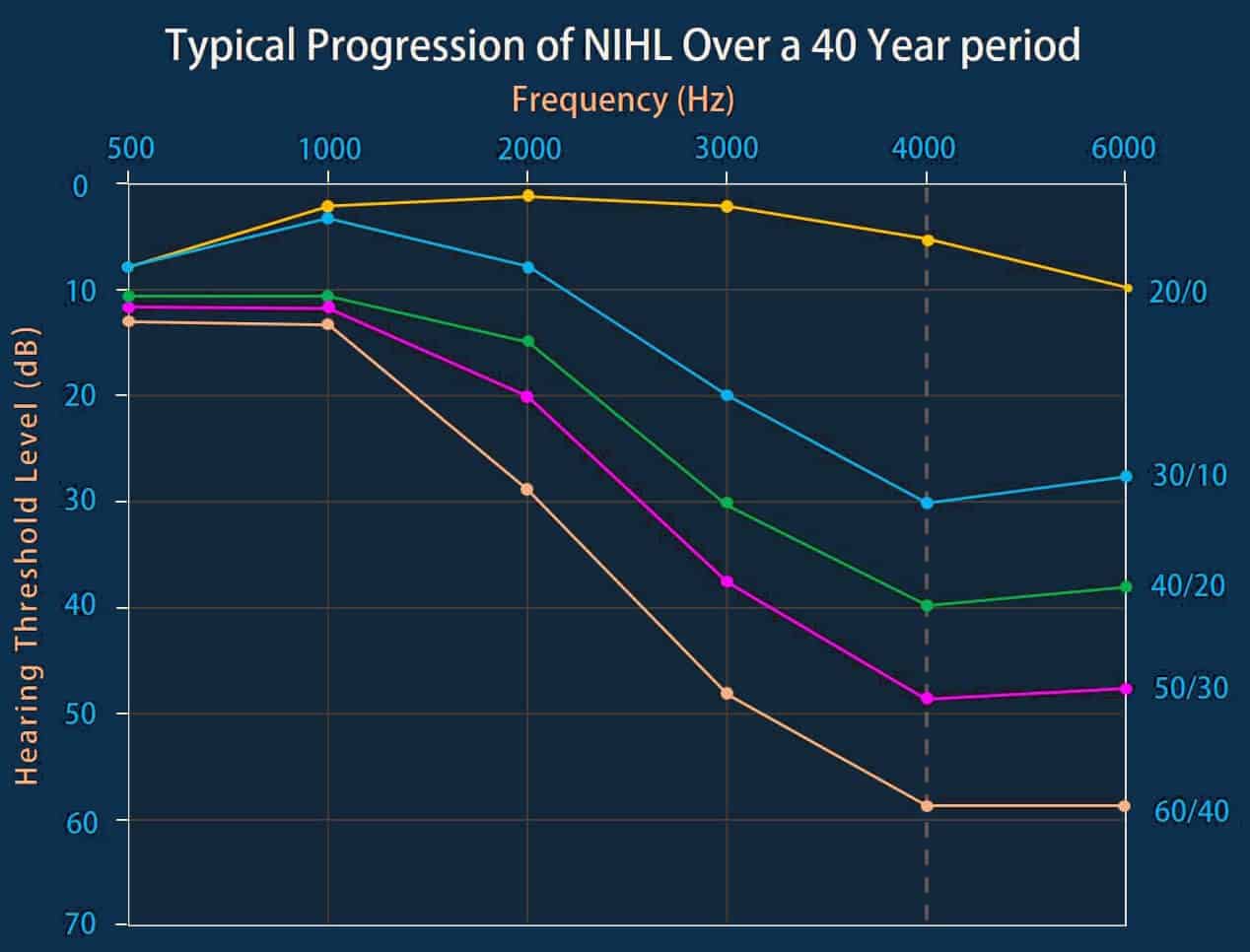Noise-Induced Hearing Loss
What is Noise-Induced Hearing Loss?

Causes
NIHL can be caused by a sudden intense sound, like an explosion, rifle shot, or firecracker, or by continuous exposure to loud sounds over an extended period of time. Repeated exposure to sound levels greater than 85 dBA can damage the hair cells in the cochlea of the inner ear, and also the nerve fibers that relay sound to the brain for processing.
Symptoms
Symptoms of NIHL increase gradually. Over time, sounds may seem distorted or muffled, and it may become increasingly difficult to understand speech. Someone with NIHL may not be aware of their hearing loss, but a hearing test can divulge the problem and promote early treatment.
Who Is Affected?

Progression
NIHL is a hearing disorder characterized by gradual, progressive high frequency hearing loss, due to harmful noise exposure. The audiogram (right, adapted from ANSI S3.44-1996, and the Better Hearing Institute, Prevention of Hearing Loss from Noise Exposure) illustrates the typical progression after daily averaged exposure to noise levels of 95 dBA for white men at ages 20, 30, 40, 50 and 60 years with 0, 10, 20, 30, & 40 years of cumulative noise exposure, respectively. An audiogram is a graphic record of an individual’s minimum hearing sensitivity for various sound frequencies
As symptoms progresses, the hearing loss may eventually spread to frequencies where human speech is pervasive…in the range of 500-3000 Hz. If hearing loss becomes pervasive in this region, understanding speech will become difficult.

